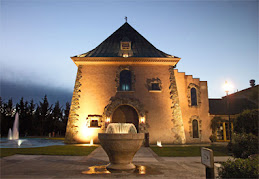How in the world is the building industry like this, you are no doubt wondering? The answer is the influence of PEER PRESSURE! This week I attended a panel on green building at the Berkeley Energy Symposium. According to the panelists peer pressure to build greener buildings is a key factor in the surge in popularity of LEED (Leadership in Energy and Environmental Design) certified construction over the past few years. I have written before about the ROI of green building initiatives, but according to the panelists, many developers are making construction decisions where no clear ROI can be measured in an effort to keep up with their competition. 90% of Class A construction, such as office or condo towers, is now pursuing LEED certification, but many developers are going beyond the pursuit of LEED points and making certain decisions for which ROI is difficult to measure. For example, the carbon used to produce the materials in buildings, so called “embedded carbon,” is a significant contributor to environmental warming. Apparently, LEED awards very few points for reducing this embedded carbon. Still, many developers are choosing materials with reduced embedded carbon for fear that their building will be perceived as less green than new construction in the same markets. Fearing risks associated with being left behind, they are hoping on the bandwagon.
Several panelists expressed hope that the influence of peer pressure would also drive greener building in Class B & C construction and even among consumers who are building their own homes or remodeling. While I hope that will someday be the case, I think a key factor is missing for peer pressure to influence smaller building projects. It seems to me that green construction reached its tipping point for Class A buildings only after many elements of green building were demonstrated to have positive ROI. Measuring complex returns from different product investments is complicated and time consuming. Small builders and consumers don’t have dedicated resources to measure the ROI of every building decision. Experiencing $20 a year of ROI on a “greener” purchase may not be enough value for many busy homeowners who balance careers and families to do extensive research and complicated calculations of value. Why would a parent want to spend 5 hours on a Saturday calculating projected energy savings for different washing machines, possibly ineffectively, when his/her children are begging them to play outdoors?
For small players to get on the green building bandwagon, projected benefits need to be easily available and simple to understand. One audience member asked why the energy star ratings on appliances only show one year of expected energy savings instead of savings over the expected life of the appliance. I thought this was a great question. Even now looking online, I can’t even find something translating the ratings into projected dollars saved. One panelist surmised that it is hard to predict energy costs over time, and thus companies would be reluctant to project such benefits. However, companies make assumptions to project ROI internally all the time. Couldn’t a third party organization provide such information to help homeowners and small builders compare the ROI of different green investments without significant effort? Perhaps it could even be interactive and available at stores or over the web so that users could manipulate energy prices and their own usage levels and see the effect of their total savings to compare it to the difference in purchase prices among products?
I am glad that “green chic,” as panelist Phil Williams called it, has become a major factor in reducing the environmental impact of the construction industry. However, I truly believe that for green building to become as common for smaller builders and middle-class American homeowners, ROI of building and materials choices needs to be easily available. Only Van Jones’ “eco-aparthiedists” can justify the expense of greener building materials and appliances based on only a desire to be green chic and feel good about their environmental footprint. For the rest of the world, we need to clearly communicate financial benefits to influence consumers to make greener purchasing decisions. Once we communicate that ROI, I hope that these other markets will reach their green tipping point so that they too can remind me of my middle school days of peer pressure and awkward dances.
In case you are wondering, these were the panelists at the event:
- Jim McMahon, Head of the Energy Analysis Department, Lawrence Berkeley Lab
- Brandon Tinianov, Chief Technology Officer, Serious Materials
- Steve Selkowitz, Director of Building Technologies, Lawrence Berkeley Lab
- Phil Williams, Vice President of Sustainability, Webcor Buildings
- Sean Ivery, Director, Navigant Consulting








No comments:
Post a Comment